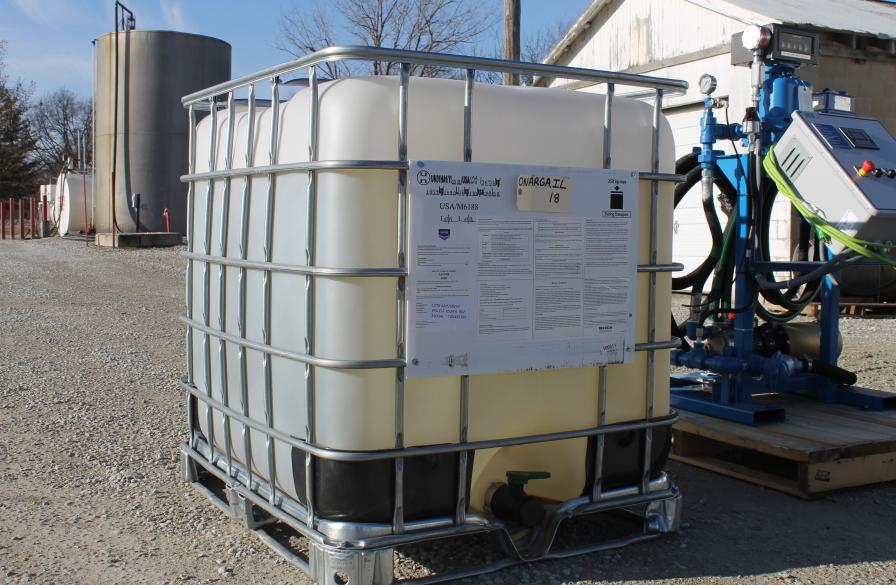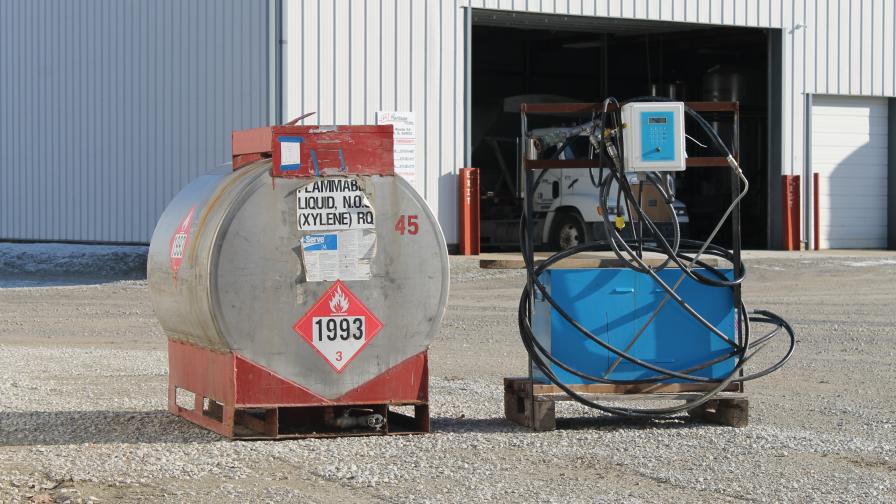N Stabilizers in 2020: Still Plenty of Work Ahead
One of the undeniable realities of agriculture is the fact that less than half of the nitrogen applied by ag retailers and their grower-customers is actually utilized by the crops.
In fact, according to data from various studies (including one by Oklahoma State University), only 33% of nitrogen applied to grow cereal crops around the globe ends up being used by the plants. Even in more controlled conditions, researchers report that they still struggle to have crops utilize more than 50% of applied nitrogen.
According to researchers, virtually every form of nitrogen fertilizer is subject to loss. For example, when dry urea is applied under warm and windy conditions with some soil moisture, ammonia volatilization loss can range from 5% to 60%. Without rainfall, volatilization can still occur as the urea prills melt in the ground and are converted into anhydrous ammonia (NH3). This, in turn, can be lost as a gas. Either way, the applied nitrogen ends up not being used to help the crops in the field grow.
Furthermore, during the 2019 growing season this nitrogen fertilizer loss situation was made even worse, say market observers, by how wet and unpredictable Mother Nature happened to be across much of the nation.
“There’s no other way to put it — 2019 was a very, very challenging year for everyone in agriculture,” says Mike Koenigs, Market Development Specialist for Corteva Agriscience. “We had delayed plantings, extremely wet weather in several key growing states, and millions of acres of prevent plant. Unfortunately, the fall of 2019 wasn’t much better. Farmers, for the most part, didn’t get much tillage done, and fertilizer application work was much slower than is normal.”
More troubling for ag retailers, this “slower than normal” fall has set the stage for a hectic spring season, he adds. “Given what happened in the fall of 2019 — or what didn’t happen, more precisely — spring 2020 should be an extremely busy time for nitrogen application,” Koenigs says. “But the season will also probably be very compressed, too, timewise. This will put a lot of pressure on everyone in agriculture to minimize any potential losses, particularly when it comes to fertilizer application.”
Set Up for Growth
Despite all these potential obstacles, the 2020 growing season looks like it could be a robust one for nitrogen (N) stabilizers. In fact, this was the finding according to the results of the 6th annual Buying Intentions Survey of ag retailers conducted in December by CropLife magazine. While all crop nutrients are expected to show significant upticks in purchases during the 2020 season, N stabilizers will be particularly strong. Indeed, according to the survey, 53% of respondents plan to increase their N stabilizer buying this year more than 11% compared with their buying habits during the 2019 growing season.
According to Martin Case, Strategic Account Manager for Koch Agronomic Services, this kind of positive outlook for the category isn’t a surprise to anyone who has paid attention to marketplace trends the past few years. “N stabilizers continue to grow, year in and year out,” Case says. “Here at Koch, we’ve obviously noticed this trend and taken steps to take advantage of it along the way.”

Centuro from Koch is a nitrogen stabilizer that works by temporarily occupying the active site or altering the enzyme found inside nitrosomonas bacteria so that it cannot oxidize ammonia.
One of these efforts involves the company developing its own N stabilizer, Centuro. Featuring the active ingredient pronitridine, Centuro works by temporarily occupying the active site or altering the enzyme found inside nitrosomonas bacteria so that it cannot oxidize ammonia. “This means that Centuro can hold the nitrogen in the ammonium form three times longer than [if] no inhibitor [is] being used,” Ryan Potter, Centuro Product Manager, said at a 2018 company event highlighting the product. “It’s also a pure liquid product while others out there are encapsulated or blended.”
In addition to its other features, Centuro is non-corrosive to the metals used with UAN and NH3, meaning it can be stored using containers made from materials other than stainless steel. It also doesn’t swell O-rings in pumps and will not freeze as long as the temperatures remain above -9°F.
Another newer product among N stabilizers is NUE-Charge G from Verdesian Life Sciences. According to Nick Favret, Product Marketing Director, the power behind NUE-Charge G is in a proprietary new “next-gen tetrapolymer” that Verdesian developed specifically for the product.
“It really builds upon the technologies already in and the success of Nutrisphere,” Favret explained to CropLife during a 2019 interview. “In layman’s terms you’re basically keeping the fertilizer from being locked up in the soil. It keeps the N from being bound by metals in the soil, yet at the same time we maintain root accessibility.”
In addition, NUE-Charge G features a wider treatment window to deal with those busy spring days, according to Favret. “With a longer storage life, as a retailer you can go ahead and pre-treat urea in the fall and have it on hand, ready to go during the spring rush,” he said.
Then there’s N-Fixx XLR from Helena Agri-Enterprises. A patented N stabilizing fertilizer additive, Helena says N-Fixx XLR protects fertilizer by reducing nitrogen volatilization by ammonia loss.
“When added to urea or urea ammonium nitrate (UAN), it delays hydrolysis caused by the urease enzyme, keeping nitrogen in the ammonium form for crops to use during the key growth stages,” the company says.
Some New Instinct
Of course, as N stabilizers go, two of the oldest on the market are N-Serve and Instinct — both from Corteva. According to the company’s Koenigs, both brands continue to be very popular with ag retailers and their grower-customers. “N-Serve has a very stable presence in the industry, and more people are beginning to use it for N stabilization into the spring season,” he says.
For 2020, Koenigs says Corteva is pretty much leaving “alone” the formulation for N-Serve. For Instinct, however, there is some “tweaking” on the way.
“Corteva has a new formulation for Instinct coming this year,” he says. “It’s called Instinct NXTGEN, which stands for ‘next generation.’ In the field, Instinct NXTGEN provides customers a lower use rate, which means a jug or shuttle of it can be used to treat more acres compared with regular Instinct.” Right now, he adds, Corteva is planning to conduct a “soft launch” of Instinct NXTGEN for the 2020 growing season, with a broader market launch taking place “during 2021.”
In the meantime, Koenigs foresees plenty of opportunities for N stabilizers to continue to make their mark on the agricultural practices into the mid-21st century.
“Many farmers and ag retailers have come a long way in using proper N management and the 4Rs in their operations,” he says. “But with many states, such as Illinois with its Keep It for the Crop Initiative, which aims to lower N loss significantly by 2025, we all still have a way to go yet. But N stabilizers can certainly help.”







